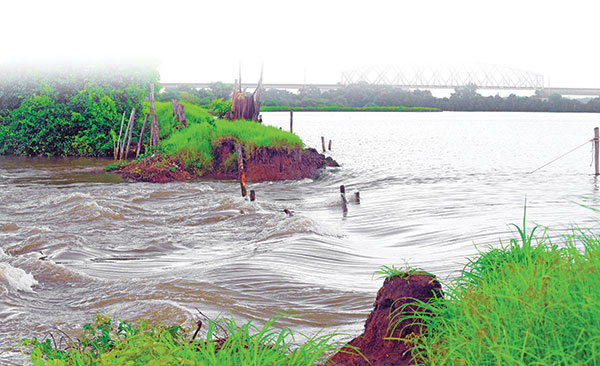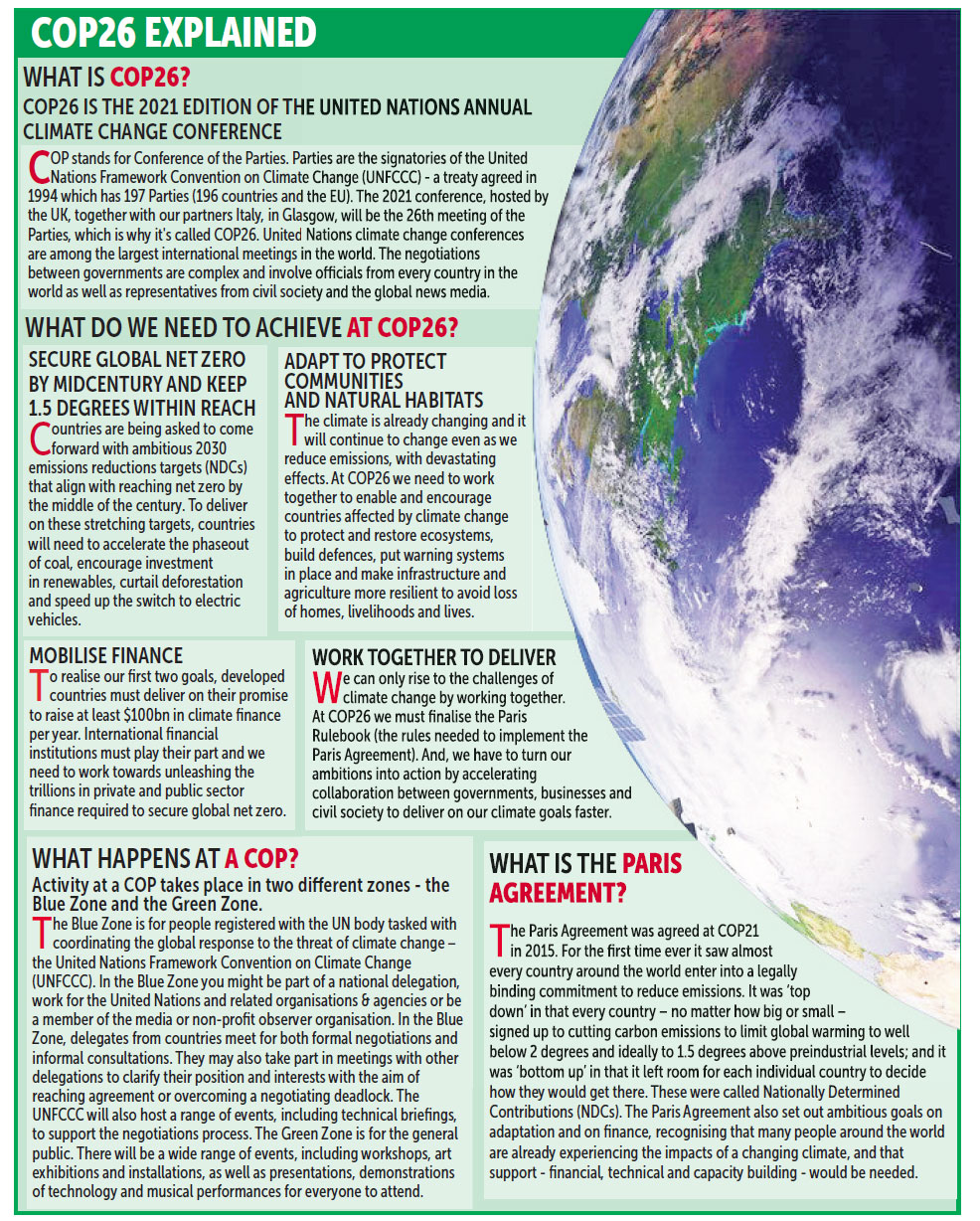
As world leaders from 195 countries are set to meet for an all-important climate conference in Glasgow, Scotland, for India’s smallest State Goa -- known for its tourism worldwide — the unusual weather phenomenon as a result of climate changes, has left scientists worried who foresee a “major cause of concern”.
From extended monsoon period to excess rains leading to flooding, to anomalous rain post New Year and hail storms in winter, chain of cyclones over last few years, rising temperature, decreasing oxygen level in sea to sudden high tides, are some of the changing climatic trends that the coastal State is going through for last couple of years.
The State Action Plan for Climate Change (SAPCC) too had rung the alarm bell that the State’s temperatures will rise by over 2 degrees Celsius in less than 15 years and also the fact that very heavy and exceptionally heavy rainfall events in the State will increase by a dramatic more than 100 per cent.
“Everywhere, globally, the climate change is evident and early signs of climate changes are seen in Goa too and these signs are of serious concern. Climate change is an unavoidable phenomenon but definitely we could delay it,” former chief scientist of National Institute of Oceanography (NIO) Dr Baban Ingole told HERALD.
Extended rainfall activities and excess rains is one of the immediate evidence of climate change that Goa can see, Ingole said, adding that though one can see it as not a problem, it can cause devastating impact on the State's economic activities like agriculture, fisheries and even tourism.

Since 2010, the Southwest Monsoon rainfall in the State has been above normal seven times –2010, 2011, 2013, 2014, 2019, 2020 and this year. In fact, the year 2020, with 165.4 inches of rain, recorded 41 per cent surplus showers- highest in a century. Before that the highest rainfall of 33 per cent above normal was recorded in 2019.
The monsoon, this year too, ended on a 6 per cent surplus note. The State’s average seasonal rainfall is 117.14 inches.
Various factors have been attributed to the increased rainfall, including back to back formation of low-pressure belts in the Arabian Sea, chain of cyclones like Nisarg, Nivar, Gati, Tauktae, low-pressure areas in Bay of Bengal, cyclonic circulations, offshore trough etc.
“It’s a scientifically proven fact that the oceans’ temperature is increasing and as a result of it, the frequency and life span of cyclones may increase. Being a coastal state that is a matter of concern for Goa,” Indian Meteorological Department (IMD) Goa Obervatory in-charge Rahul M said.
The Country as whole is experiencing an extended monsoon period and Goa is not an exception to it. According to IMD data, as against its normal date on October 14, in 2020, the monsoon withdrew from Goa on October 28 and in 2019 it was on October 16. In 2018, the withdrawal was on October 25. This year too, the withdrawal took place on October 24.
“I would say the whole of India is experiencing Climate Change, Goa being not an exception. This year we had hailstorms in the winter months which we never heard of. Also seasonal rainfall also had significant changes with extreme rainfall events happening all over India, including the state of Goa,” former NIO scientist Ramesh Kumar said.
He also said that the Arabian Sea has been witnessing more and more cyclones in the past one decade and the year 2019 we had 8 cyclones out of which 5 formed in the Arabian Sea. “These cyclones caused lot of damage to Goa and affected its ecology,” Kumar said.
Goa is also experiencing an increase in temperature higher than 35 degree celsius during summer. “We have seen an increase in the number of days with such high temperatures,” IMD scientist Rahul said.
However, scientist Ingole claims that not just in summer, but winters too, are experiencing temperatures above 30 degree celsius, which is not a normal trend. “Winters have started with rising temperatures rather than drop in temperature,” he explained.
The scientist points out that unexpected high tides are yet another sign. “These are worried signs for coastal State,” Ingole said, adding the rise in pollution, temperature and sea level may have a complex and harmful impact on benthic organisms and can be seen with mass mortality of fish and appearance of jelly fish this year.
